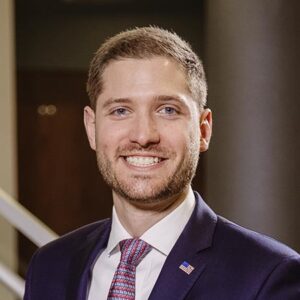By Jason Culotta
Director of Tax and Transportation Policy
Wisconsin Manufacturers & Commerce
July marked the end of a contentious state budget process. Providing more funding for transportation needs was widely discussed, but reductions in the level of borrowing and delays in highway projects were the result.
This year many states adopted new revenues to keep up with costs, yet Wisconsin was not among them. Wisconsin has long relied on user fees to finance such spending, principally the gas tax (about $1 billion annually) and vehicle registration fees ($670 million). Neither of those sources has seen rate increases since 2006 and 2007, respectively.
Without new money, borrowing has been used to cover growing expenses. The 2013-15 budget provided $991 million in infrastructure borrowing, compared to $780 million prior.
Wisconsin provides local road aids to counties, towns, and municipalities and aid to local bus systems as well as rail and harbor improvements. However, most transportation appropriations are for highways.
The highway program consists of three main pillars: State Highway Rehabilitation (about $800 million in annual expenditures for smaller projects), Major Highway Development (about $370 million for larger projects outside Milwaukee such as Highway 441 in the Fox Cities and I-90 from Beloit to Madison), and the Southeast Wisconsin Freeway Megaprojects (about $300 million last year).
The Megaprojects consist of 116 miles of freeways in and around Milwaukee that were first built in the 1950s and 60s. Only 23 miles has so far been rehabilitated or reconstructed.
State officials hoped to conclude the “Megas” with $350 million annually over 15 years. Net costs could be reduced by literally billions of dollars compared to stretching these projects over three decades. But paying for the Megas cannot happen without increased funding. When the demands of “Rehab” and “Majors” and other infrastructure spending are taken into consideration, current revenues are clearly inadequate.
What options does Wisconsin realistically have? Efficiencies can always (and should) be pursued, though unlikely to generate sufficient offsets. Projects can be delayed, except that only adds to the price tag of projects which must be done. Tolling is a limited option; Wisconsin would require an act of Congress to toll an existing interstate. Other areas of the country have succeeded in similar requests, although it is a heavy lift. Tracking vehicle miles traveled is a new idea that has not been put into practice and draws strong public opposition, yet likely has a future in financing transportation.
Many states dedicate a significant portion of the general fund to infrastructure. Wisconsin will transfer $38 million this year from its principal account, helpful but not enough to meet the demand. Shifting more general fund money is nearly impossible in an age of exploding entitlement costs. Wisconsin’s share of BadgerCare and related programs swelled by $1.4 billion in the 2011-13 budget, $850 million in 2013-15, and over $650 million in the current document. This expense alone consumes most of the growth in tax collections, crowding out other priorities like schools and roads.
The vehicle registration fee, currently $75 per year for most vehicles, could be raised. Boosting the fee by $25 would add $87 million annually, comprising part of the solution and similar to charges elsewhere. A 5-cent addition to the gas tax would generate about $160 million more each year.
It’s easy to see why seven states have boosted the gas tax since January: other options aren’t as viable. If Wisconsin is to address its substantial transportation needs, we will be forced to consider a similar revenue increase – probably in the next budget.
###
A version of this article appears in the October 2015 edition of the WMC Business Voice magazine.
Founded in 1911, Wisconsin Manufacturers & Commerce (WMC) is the state’s chamber of commerce and leading business association representing 3,800 employers of all sizes and from all sectors of the economy.





